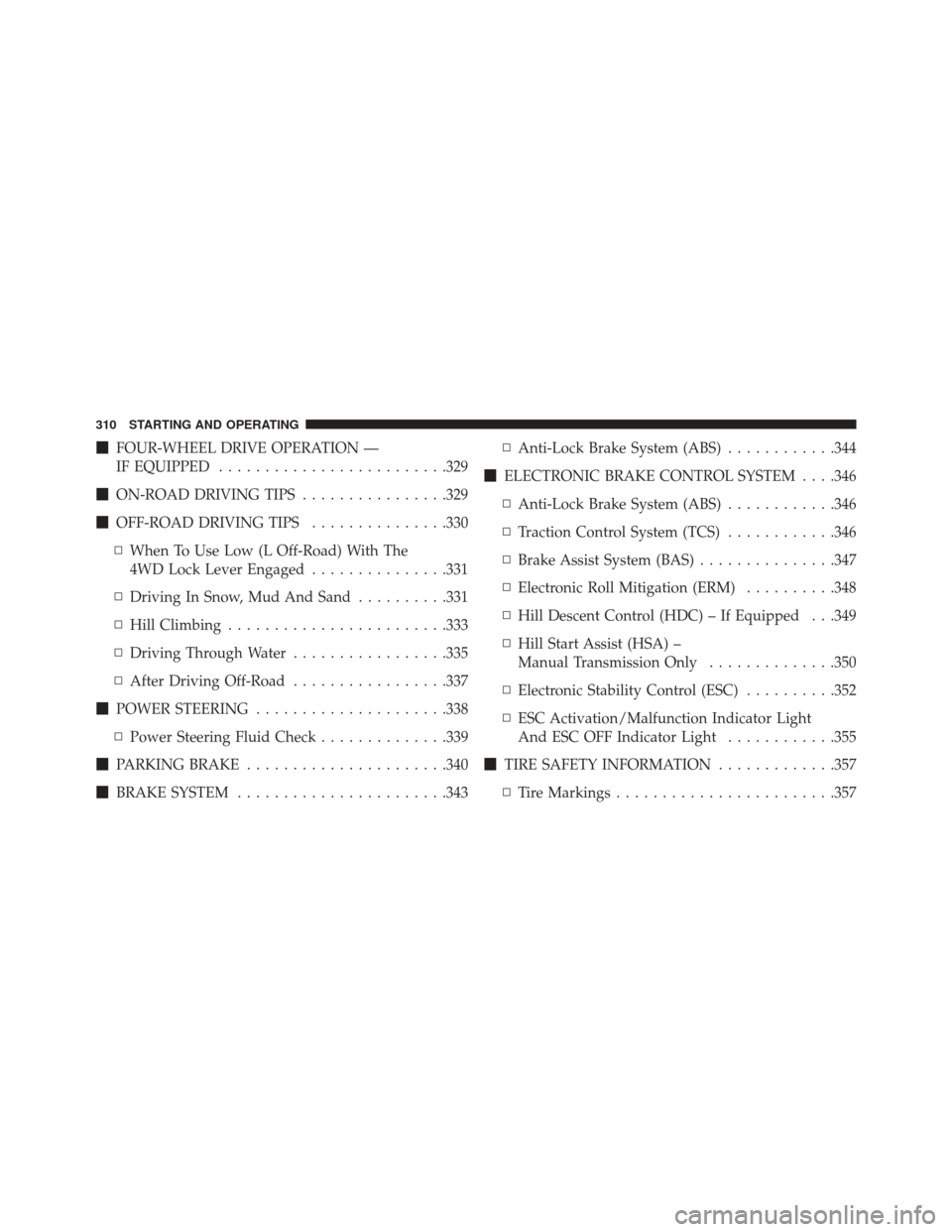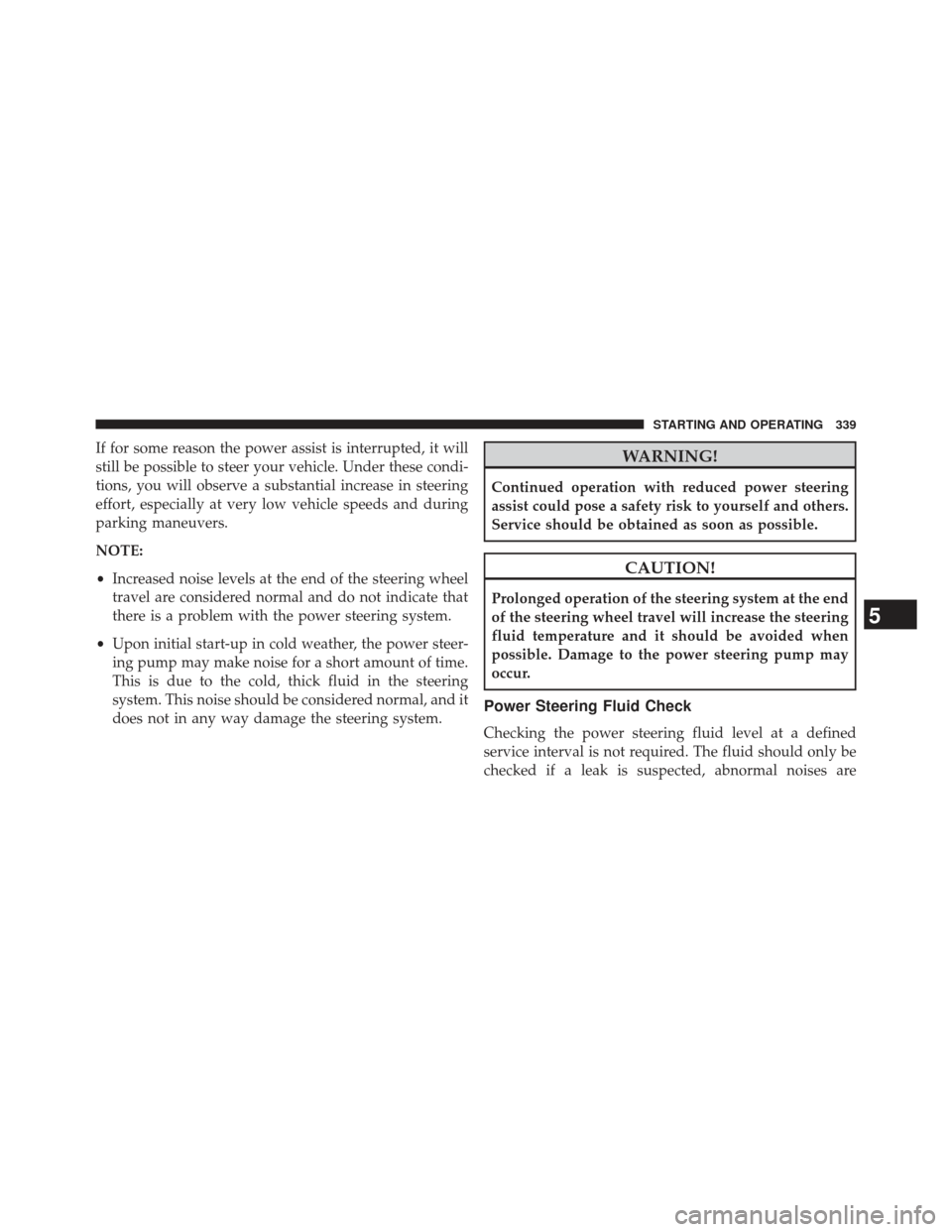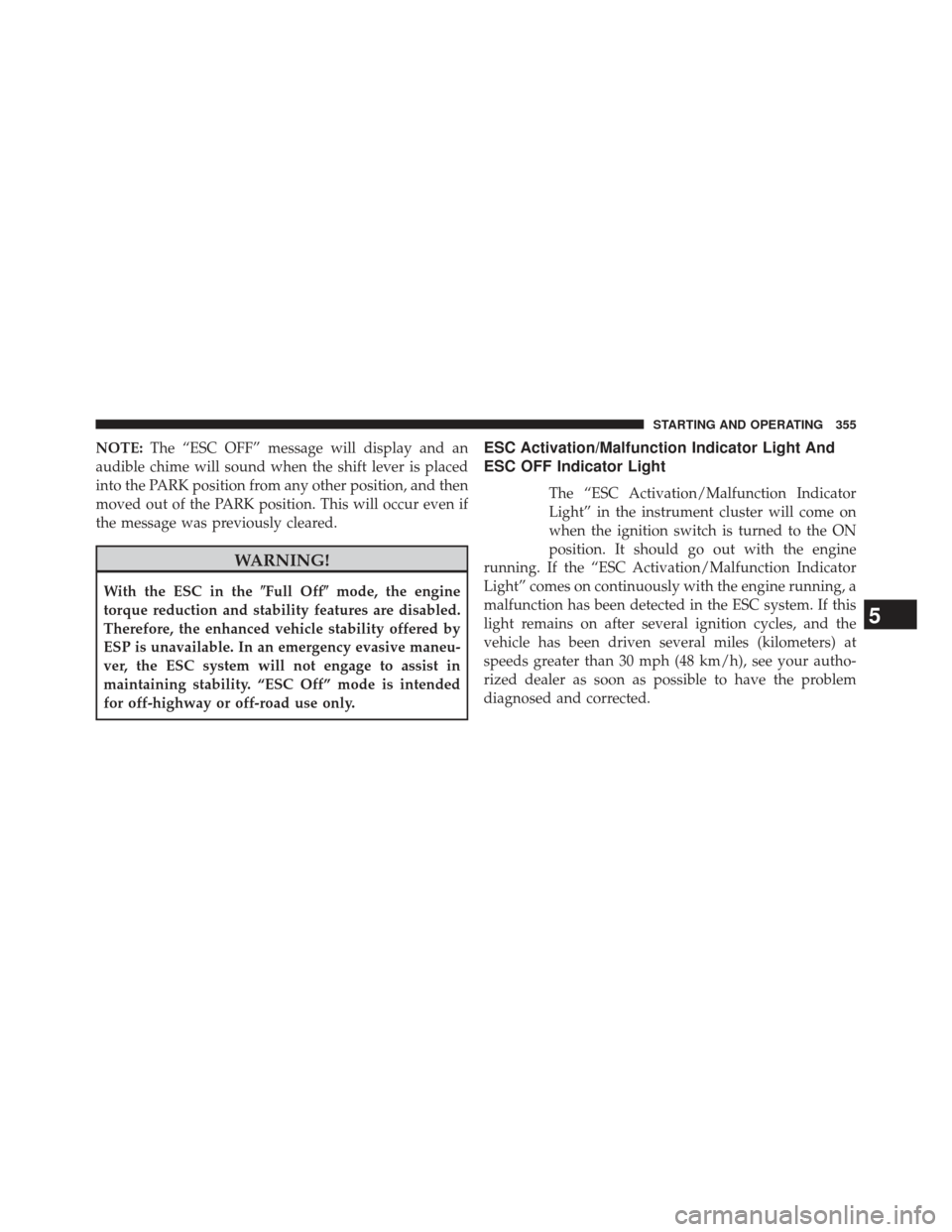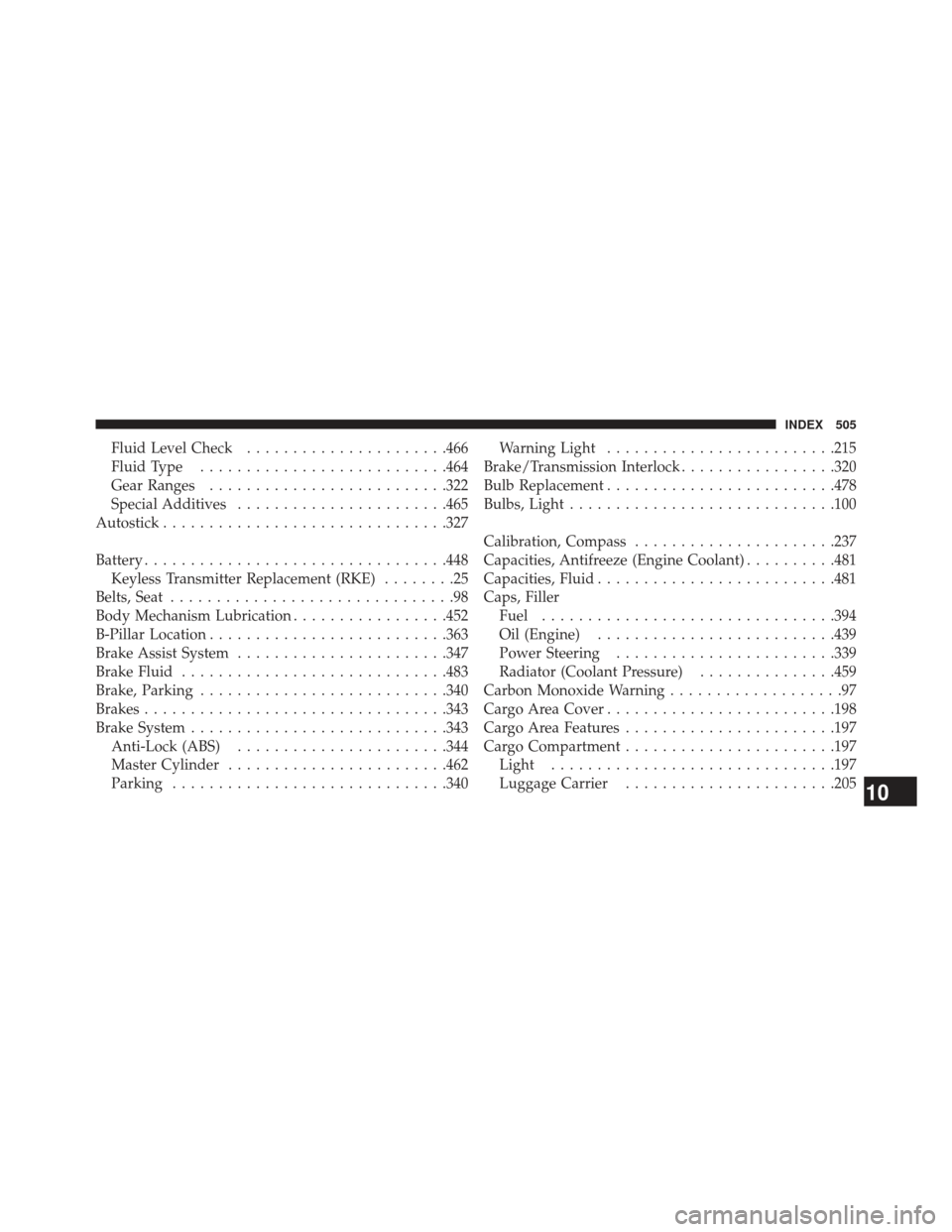Page 179 of 525

HomeLink�Buttons/Sunvisor/Headliner
NOTE:HomeLink� is disabled when the Vehicle Secu-
rity Alarm is active.
Before You Begin Programming HomeLink �
Be sure that your vehicle is parked outside of the garage
before you begin programming. For more efficient programming and accurate transmis-
sion of the radio-frequency signal it is recommended that
a new battery be placed in the hand-held transmitter of
the device that is being programmed to the HomeLink
�
system.
Erase all channels before you begin programming. To
erase the channels place the ignition in the ON/RUN
position and press and hold the two outside HomeLink �
buttons (I and III) for up 20 seconds or until the red
indicator flashes.
NOTE:
• Erasing all channels should only be performed when
programming HomeLink� for the first time. Do not
erase channels when programming additional buttons.
• If you have any problems, or require assistance, please
call toll-free 1–800–355–3515 or, on the Internet at
www.HomeLink.com for information or assistance.
3
UNDERSTANDING THE FEATURES OF YOUR VEHICLE 177
Page 312 of 525

�FOUR-WHEEL DRIVE OPERATION —
IF EQUIPPED ........................ .329
� ON-ROAD DRIVING TIPS ................329
� OFF-ROAD DRIVING TIPS ...............330
▫ When To Use Low (L Off-Road) With The
4WD Lock Lever Engaged ...............331
▫ Driving In Snow, Mud And Sand ..........331
▫ Hill Climbing ....................... .333
▫ Driving Through Water .................335
▫ After Driving Off-Road .................337
� POWER STEERING .....................338
▫ Power Steering Fluid Check ..............339
� PARKING BRAKE ..................... .340
� BRAKE SYSTEM ...................... .343▫
Anti-Lock Brake System (ABS) ............344
� ELECTRONIC BRAKE CONTROL SYSTEM . . . .346
▫ Anti-Lock Brake System (ABS) ............346
▫ Traction Control System (TCS) ............346
▫ Brake Assist System (BAS) ...............347
▫ Electronic Roll Mitigation (ERM) ..........348
▫ Hill Descent Control (HDC) – If Equipped . . .349
▫ Hill Start Assist (HSA) –
Manual Transmission Only ..............350
▫ Electronic Stability Control (ESC) ..........352
▫ ESC Activation/Malfunction Indicator Light
And ESC OFF Indicator Light ............355
� TIRE SAFETY INFORMATION .............357
▫ Tire Markings ....................... .357
310 STARTING AND OPERATING
Page 341 of 525

If for some reason the power assist is interrupted, it will
still be possible to steer your vehicle. Under these condi-
tions, you will observe a substantial increase in steering
effort, especially at very low vehicle speeds and during
parking maneuvers.
NOTE:
•Increased noise levels at the end of the steering wheel
travel are considered normal and do not indicate that
there is a problem with the power steering system.
• Upon initial start-up in cold weather, the power steer-
ing pump may make noise for a short amount of time.
This is due to the cold, thick fluid in the steering
system. This noise should be considered normal, and it
does not in any way damage the steering system.WARNING!
Continued operation with reduced power steering
assist could pose a safety risk to yourself and others.
Service should be obtained as soon as possible.
CAUTION!
Prolonged operation of the steering system at the end
of the steering wheel travel will increase the steering
fluid temperature and it should be avoided when
possible. Damage to the power steering pump may
occur.
Power Steering Fluid Check
Checking the power steering fluid level at a defined
service interval is not required. The fluid should only be
checked if a leak is suspected, abnormal noises are
5
STARTING AND OPERATING 339
Page 357 of 525

NOTE:The “ESC OFF” message will display and an
audible chime will sound when the shift lever is placed
into the PARK position from any other position, and then
moved out of the PARK position. This will occur even if
the message was previously cleared.
WARNING!
With the ESC in the �Full Off�mode, the engine
torque reduction and stability features are disabled.
Therefore, the enhanced vehicle stability offered by
ESP is unavailable. In an emergency evasive maneu-
ver, the ESC system will not engage to assist in
maintaining stability. “ESC Off” mode is intended
for off-highway or off-road use only.
ESC Activation/Malfunction Indicator Light And
ESC OFF Indicator Light
The “ESC Activation/Malfunction Indicator
Light” in the instrument cluster will come on
when the ignition switch is turned to the ON
position. It should go out with the engine
running. If the “ESC Activation/Malfunction Indicator
Light” comes on continuously with the engine running, a
malfunction has been detected in the ESC system. If this
light remains on after several ignition cycles, and the
vehicle has been driven several miles (kilometers) at
speeds greater than 30 mph (48 km/h), see your autho-
rized dealer as soon as possible to have the problem
diagnosed and corrected.
5
STARTING AND OPERATING 355
Page 395 of 525

CAUTION!(Continued)
•An out-of-tune engine or certain fuel or ignition
malfunctions can cause the catalytic converter to
overheat. If you notice a pungent burning odor or
some light smoke, your engine may be out of tune
or malfunctioning and may require immediate ser-
vice. Contact your authorized dealer for service
assistance.
• The use of fuel additives, which are now being
sold as octane enhancers, is not recommended.
Most of these products contain high concentrations
of methanol. Fuel system damage or vehicle perfor-
mance problems resulting from the use of such
fuels or additives is not the responsibility of the
manufacturer.
NOTE: Intentional tampering with the emissions control
system can result in civil penalties being assessed against
you.
Carbon Monoxide Warnings
WARNING!
Carbon monoxide (CO) in exhaust gases is deadly.
Follow the precautions below to prevent carbon
monoxide poisoning:
• Do not inhale exhaust gases. They contain carbon
monoxide, a colorless and odorless gas, which can
kill. Never run the engine in a closed area, such as
a garage, and never sit in a parked vehicle with the
engine running for an extended period. If the
vehicle is stopped in an open area with the engine
running for more than a short period, adjust the
ventilation system to force fresh, outside air into
the vehicle.
(Continued)
5
STARTING AND OPERATING 393
Page 507 of 525

Fluid Level Check..................... .466
Fluid Type .......................... .464
Gear Ranges ......................... .322
Special Additives ...................... .465
Autostick .............................. .327
Battery ................................ .448
Keyless Transmitter Replacement (RKE) ........25
Belts, Seat ...............................98
Body Mechanism Lubrication .................452
B-Pillar Location ......................... .363
Brake Assist System ...................... .347
Brake Fluid ............................ .483
Brake, Parking .......................... .340
Brakes ................................ .343
Brake System ........................... .343
Anti-Lock (ABS) ...................... .344
Master Cylinder ....................... .462
Parking ............................. .340Warning Light
........................ .215
Brake/Transmission Interlock .................320
Bulb Replacement ........................ .478
Bulbs, Light ............................ .100
Calibration, Compass ..................... .237
Capacities, Antifreeze (Engine Coolant) ..........481
Capacities, Fluid ......................... .481
Caps, Filler Fuel ............................... .394
Oil (Engine) ......................... .439
Power Steering ....................... .339
Radiator (Coolant Pressure) ...............459
Carbon Monoxide Warning ...................97
Cargo Area Cover ........................ .198
Cargo Area Features ...................... .197
Cargo Compartment ...................... .197
Light .............................. .197
Luggage Carrier ...................... .205
10
INDEX 505